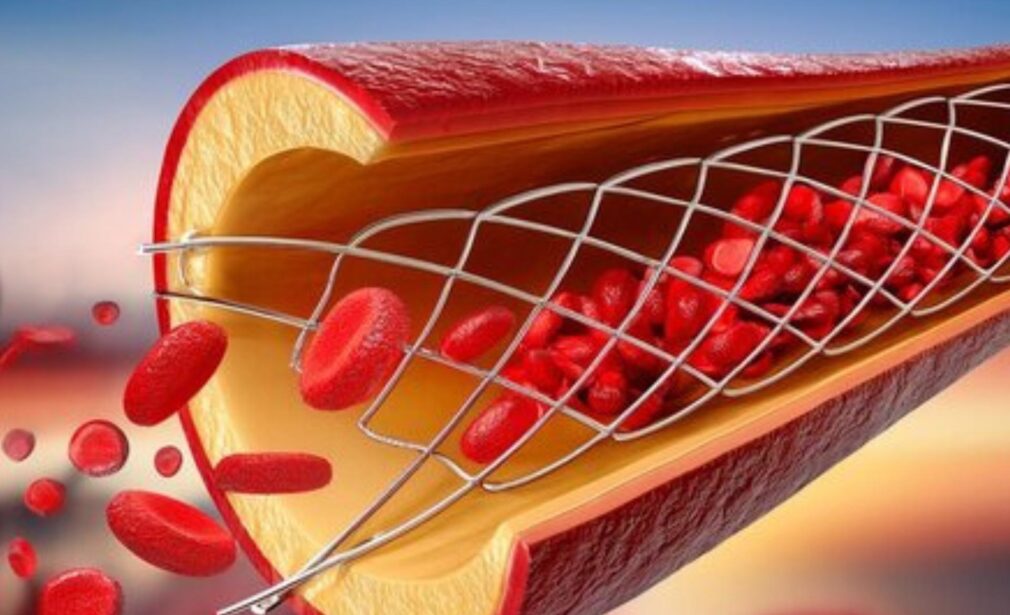Peripheral Angiography and Angioplasty (Carotid / Renal) in Mohali
Peripheral artery disease (PAD) is a serious vascular condition in which arteries outside the heart — such as those supplying the brain (carotid arteries) or kidneys (renal arteries) — become narrowed or blocked due to plaque buildup.
Peripheral Angiography and Angioplasty are advanced, minimally invasive procedures used to diagnose and treat carotid and renal artery blockages, restoring blood flow and preventing life-threatening complications like stroke or kidney failure.
In Mohali, Dr. Honey Sharma, an experienced Interventional Cardiologist, offers carotid angiography, renal angiography, and balloon angioplasty using cutting-edge technology and precision techniques.
What is Peripheral Angiography?
Peripheral angiography is a specialized imaging test that uses contrast dye and X-ray technology to visualize blood flow in arteries outside the heart.
Carotid Angiography – Examines the neck arteries supplying blood to the brain.
Renal Angiography – Examines the arteries supplying the kidneys.
What is Peripheral Angioplasty?
If a blockage is found during angiography, peripheral angioplasty may be performed immediately. This involves:
Inserting a balloon-tipped catheter into the narrowed artery
Inflating the balloon to widen the artery
Sometimes placing a stent to keep the artery open
Conditions Treated with Carotid & Renal Angioplasty in Mohali
Dr. Honey Sharma performs peripheral interventions for:
Carotid artery stenosis (narrowing of brain-supplying arteries)
Renal artery stenosis (narrowing of kidney-supplying arteries)
Atherosclerosis in neck and kidney arteries
Hypertension caused by renal artery narrowing
Stroke prevention in patients with carotid blockages
Why Peripheral Angiography and Angioplasty are Important
Blockages in carotid arteries can cause transient ischemic attacks (TIAs) or strokes, while blockages in renal arteries can lead to kidney damage and uncontrolled blood pressure.
Early diagnosis and timely intervention can:
Prevent stroke
Preserve kidney function
Improve blood flow to vital organs
Reduce cardiovascular risk
The Procedure – Step-by-Step with Dr. Honey Sharma
1. Preparation
Patient is evaluated through history, examination, and blood tests
Informed consent is obtained
Local anesthesia is given
2. Diagnostic Angiography
A catheter is inserted into a blood vessel (usually in the groin or wrist)
Contrast dye is injected to visualize arteries under X-ray
3. Angioplasty (if required)
A balloon catheter is placed at the site of narrowing
The balloon is inflated to open the artery
A stent may be placed to keep it open
4. Post-Procedure Monitoring
Patients are observed for a few hours
Most are discharged within 24 hours
Benefits of Peripheral Angioplasty
Minimally invasive – no open surgery required
Short recovery time – most patients resume activities within days
Effective stroke prevention in carotid disease
Improved kidney function in renal artery disease
Better blood pressure control in hypertension caused by renal narrowing
Why Choose Dr. Honey Sharma for Peripheral Interventions in Mohali
Specialized Expertise – Trained in advanced vascular interventions
Cutting-Edge Imaging – Ensuring precision in diagnosis and treatment
Comprehensive Cardio-Vascular Care – Managing heart and vascular health together
Patient-Focused Approach – Personalized treatment plans
Convenient Mohali Location – Sector 69, easily accessible to Tricity residents
Risks and Safety
Peripheral angiography and angioplasty are generally safe, but possible risks include:
Bruising at catheter site
Allergic reaction to contrast dye
Rare vessel injury or clot formation
Dr. Sharma takes all precautions to minimize risks and ensure patient safety.
Recovery After Peripheral Angioplasty
Most patients stay in the hospital for less than 24 hours
Avoid heavy lifting for a week
Resume normal diet and walking the next day
Follow-up appointments to monitor progress
Carotid vs. Renal Angioplasty – Quick Overview
| Feature | Carotid Angioplasty | Renal Angioplasty |
|---|---|---|
| Purpose | Stroke prevention | Kidney protection, BP control |
| Target Arteries | Neck arteries | Kidney arteries |
| Common Symptom | TIA, dizziness | Resistant hypertension |
| Outcome | Reduced stroke risk | Improved kidney function |
Patient Testimonials in Mohali
“I had severe narrowing in my carotid artery. Dr. Sharma’s angioplasty procedure was smooth, and I was home the next day. I feel more confident about my health now.” – Rajesh, Mohali
“After my renal angioplasty, my blood pressure is finally under control. Dr. Honey Sharma explained everything clearly and took great care of me.” – Meena, Chandigarh
Frequently Asked Questions (FAQs)
1. What is the difference between carotid and renal angioplasty?
Carotid angioplasty treats neck artery blockages to prevent strokes, while renal angioplasty treats kidney artery blockages to preserve kidney function and control blood pressure.
2. Is peripheral angioplasty painful?
No, local anesthesia is used, and patients generally experience minimal discomfort.
3. How long does recovery take?
Most people resume normal activities within a week.
4. Can angioplasty cure hypertension?
In cases where hypertension is caused by renal artery stenosis, angioplasty can significantly improve blood pressure control.
5. Is peripheral angioplasty available in Mohali?
Yes, Dr. Honey Sharma offers advanced carotid and renal angioplasty procedures at her Sector 69, Mohali facility.
Book Your Peripheral Angiography & Angioplasty Consultation in Mohali
If you have symptoms of stroke risk, resistant hypertension, or have been diagnosed with carotid or renal artery narrowing, don’t delay treatment.

